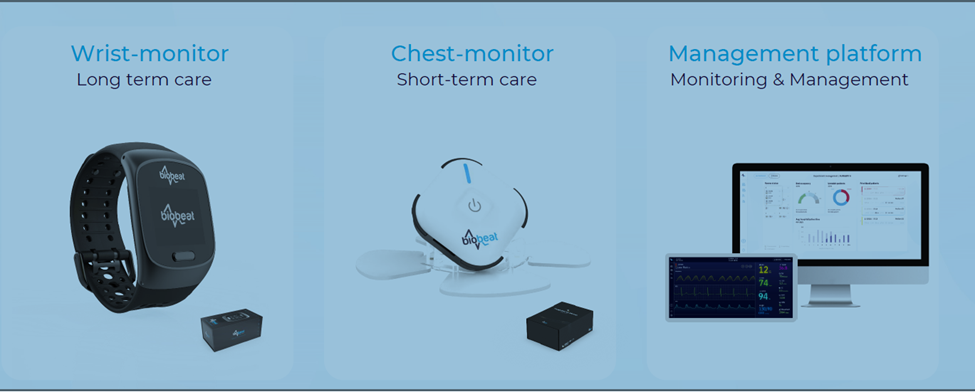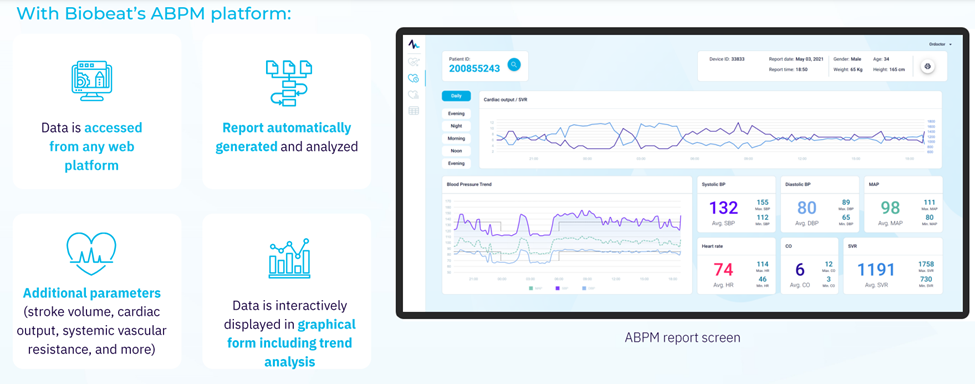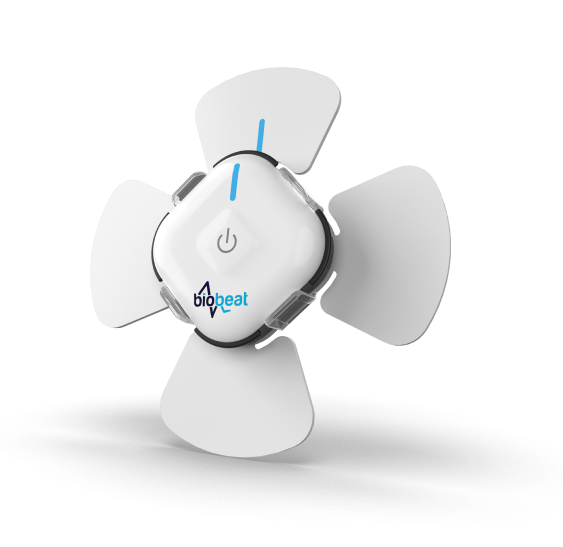- Blood Pressure 101
- Traditional blood pressure monitoring methods
- Reducing the burden of disease management
- Biobeat – on the pulse of innovation in blood pressure monitoring
- Blood pressure monitoring in hospitals
- Biobeat’s End-to-End Hospital Solution
- At-home monitoring of blood pressure
- So, what does ABPM mean for medical professionals?
- Why the US Government is getting on the home-care bandwagon
- Conclusion
How Continuous bp Monitor are Significantly Reducing the Burden of Hypertension Disease
Blood pressure – everybody’s got it and none of us can live without it. So, what exactly is it? In a nutshell, it’s the force of circulating blood on the walls of the arteries.
This article discusses the dangers of high blood pressure, the ways in which it is traditionally monitored and how ambulatory blood pressure monitoring can improve patient quality of life, help save lives and improve general patient management for healthcare professionals.
Blood Pressure 101
The American Heart Association lists normal blood pressure levels at less than 120/80 mmHg. Low blood pressure (hypotension) can signal an underlying problem, especially when it drops suddenly, or is accompanied by signs and symptoms such as dizziness or lightheadedness, fainting, blurred or fading vision, nausea, fatigue, and lack of concentration.
High blood pressure (hypertension) on the other hand, can present as severe headaches, nosebleeds, fatigue or confusion, vision problems, chest pain, difficulty breathing, irregular heartbeat and even, blood in the urine.
Hypertension in particular, can lead to serious health problems, among them; heart attack or stroke, aneurysm, heart failure, weakened and narrowed blood vessels in your kidneys, thickened, narrowed or torn blood vessels in the eyes, metabolic syndrome, trouble with memory or understanding and even, dementia.
The problem with high blood pressure is, that often, the patient doesn’t even know that they have it. It builds up slowly and silently, until it’s critical, and in some cases, fatal, hence its nickname – ‘The silent killer.’
Traditional blood pressure monitoring methods
Blood pressure is traditionally taken using two measurements: systolic (estimated when the heart beats when blood pressure is at its highest) and diastolic, (measured between heart beats, when blood pressure is at its lowest). Usually, these measurements are taken by a health care professional who will wrap an inflatable cuff, officially called a sphygmomanometer, around the arm. The medical professional will then inflate the cuff, which then gently tightens while a gauge noninvasively measures the blood pressure in the body, the output of which is the systolic and diastolic measurement.
Reducing the burden of disease management
Blood pressure measurement can lead to and prevent a wealth of issues. For example, hypertension patients are not always able to get into the clinic to get their blood pressure monitored. This alone can lead to a plethora of preventable illnesses, and even death.
In the same vein (no pun intended), patients with home blood pressure kits are also commonly prone to either forgetting to measure their blood pressure (non-compliance), often misunderstand (or misread) data (inaccurate reporting), require a nurse to come and help them (costly resources), and/or do not show up for time-intensive video/telephone consultations.
With the development of technology in every medical field, it’s clear that we’ve come a long way since the manual measuring of pulses, blood pressure, and more. Today, though electronic blood pressure monitors are readily available and can solve many of the abovementioned issues through ambulatory blood pressure monitoring, it is still based on cuff measurements, which is cumbersome and inconvenient. Used repeatedly by multiple patients, the cuff has to be adjusted to the arm size, which often leads to low patient compliance with regards to performing the test correctly.
Sensor-based electronic blood pressure monitors do exactly the same thing that traditional blood pressure monitors do but, have the added benefit of monitoring without interfering with the patients’ routine.
With sensor-based electronic blood pressure monitors, the patient is not aware that he or she is being monitored, which makes it a fully objective tool of measurement. Additionally, the device collects more vital signs than cuff-based devices and can automatically detect any changes in blood flow and systolic/diastolic pressures.
So, we can understand that with modern sensor technology, blood pressure can now be measured in patients, without having to compress an artery with an inflatable cuff. The results – pressure is measured faster and more accurately and the monitor itself, doesn’t have to be so big and cumbersome. Additionally, electric monitors have the advantage of ‘seeing’ the big picture and as such, can compare data in real-time in order to pick up and report on any anomalies found.
With sensor-based systems, blood pressure measurement is conducted quickly, accurately, and automatically.
No cuff required.
Biobeat – on the pulse of innovation in blood pressure monitoring
The solution is ideal for the following scenarios:
- Long-term care -Monitoring from home for the control of chronic conditions via a blood pressure monitor watch
- Short-term care – Monitoring (in hospitals) via a lightweight chest monitor.
- Initial diagnosis – Monitoring for 24-hours to determine if the patient is suffering from high blood pressure (hypertension).
Each of the devices provide all the vitals required to monitor general health and blood pressure. The technology itself is based on reflective photoplethysmography (PPG), or a noninvasive optical method, which measures the heart rate, blood oxygen saturation, blood pressure, and several other cardio-pulmonary parameters.
Biobeat’s wearable devices are the first devices to be FDA-Cleared for cuffless non-invasive blood pressure monitoring using PPG only and are also CE Mark certified.
Blood pressure monitoring in hospitals
Today, blood pressure monitoring in hospitals presents several ongoing challenges. Among them:
Biobeat transcends these challenges with a unique end-to-end blood pressure monitoring solution for hospitals that includes:
- A convenient and easy to attach chest monitor that automatically collects vital sign measurements
- Connects to the Biobeat gateway
- Transmits the data to the cloud for viewing by medical staff.
*The system also provides alerts on the patients’ state and/or deterioration.
Biobeat’s End-to-End Hospital Solution
The solution is fast and easy to install and integrates seamlessly into a hospitals EMR (Electronic Medical Record) regardless of its location within the hospital.
Biobeat’s continuous bp monitoring solution for hospitals bridges all major gaps in general wards, surgical wards, post-surgery, step-down units, med-surg units, the ICU and emergency departments.
At-home monitoring of blood pressure
Differing from traditional methods in that it is cuffless, Biobeat’s wireless, non-invasive, medical-grade wrist-worn device enables blood pressure monitoring by automatically capturing critical patient cardio-pulmonary health data throughout the day. Easy and intuitive to use, this next-gen, proprietary PPG-based sensor is designed to be set up at the patients’ home, without the need for the presence of medical personal.
So, what does ABPM mean for medical professionals?
In essence, it’s a positive disruption in the constraints of traditional ABPM – Ambulatory Blood Pressure Monitoring. This means that the patient’s systolic and diastolic blood pressure, heart rate, mean arterial pressure, cardiac output and systemic vascular resistance are all readily available, accurately measured, with reports that can be analyzed on-demand, from anywhere. Patients can access the information via a connected smartphone app, and doctors can tap into an online report via a web application.
Why the US Government is getting on the home-care bandwagon
The US Government is in full understanding and indeed, totally clued up with regards to the far-reaching costs of undetected, untreated high blood pressure. As a result, they have launched a campaign to pay for patients to get health care services in the home, provided that the patient meets the eligibility criteria. Patients that are homebound, certified by a doctor with a blood pressure problem and under an existing plan of care can enjoy all of these benefits, which are mutually beneficial for both the patient and the healthcare system, increasing patient quality of life and potentially saving millions on preventable diseases resulting from untreated hypertension.
Conclusion
Applications such as Biobeat’s have strong implications for hospitals conducting remote patient monitoring, home healthcare platforms and General Practitioners. By removing compliance implications and slashing resources, everybody wins. Patients enjoy a higher quality of life and peace of mind knowing their blood pressure is in expert hands, medical professionals get all the data they need, accurately and in real-time to help prevent life threatening hypertension events before they happen, and healthcare facilities… save millions.
Now that’s progress.







